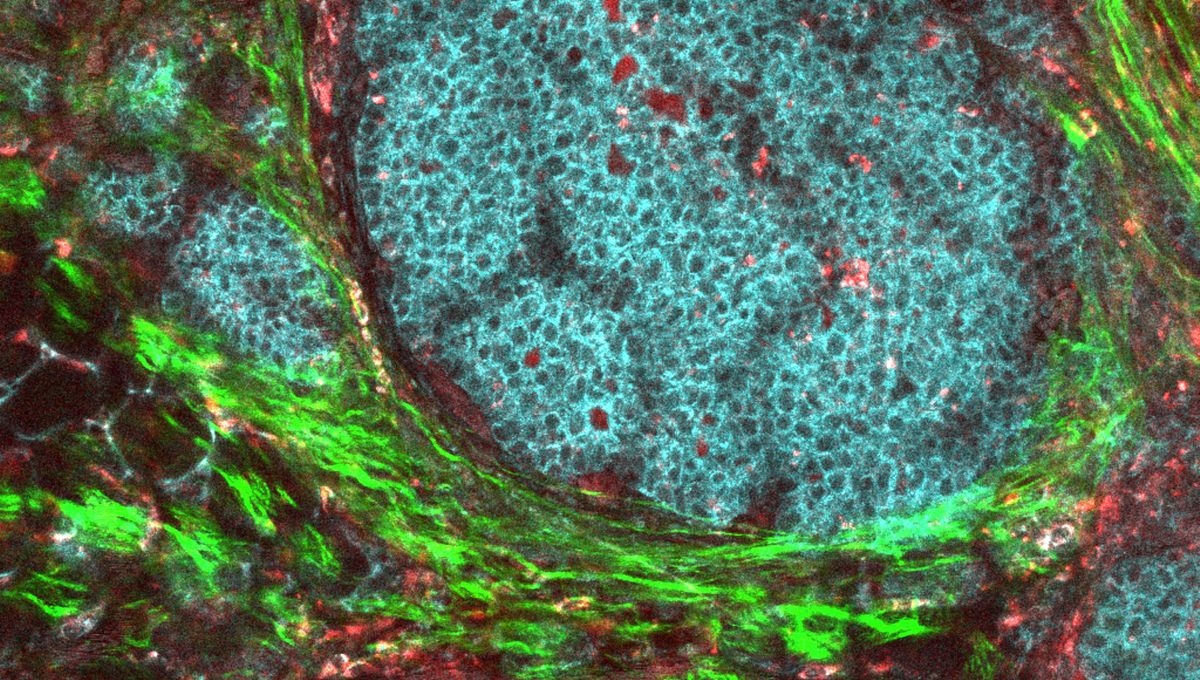
In a new package of 12 detailed papers, scientists have unveiled 3D “blueprints” of multiple different tumor types, giving researchers a close look at how cancers develop and progress.
“These 3D maps of tumors are important because they finally let us see what, until now, we have only been able to infer about tumor structures and their complexity,” said Dr Li Ding of Washington University School of Medicine, who co-led some of the research, in a statement.
The collection of papers forms the latest release from the Human Tumor Atlas Network (HTAN). Since 2018, the network’s research centers and central Data Coordinating Center have been collaborating to produce these 3D atlases for a diverse range of human cancer types, with the hope that a more detailed understanding of the disease will help pave the way for new and better treatments.
Importantly, the HTAN includes a focus on tumor types that primarily affect minority groups, inherited tumors, and aggressive childhood cancers.
The level of detail afforded by these 3D atlases removes all the guesswork – rather than having to predict how tumors function and interact with their environments, scientists can actually see things happening.
“We understood that cancer cells, immune cells and structural cells were all present in the tumor, sometimes protecting the cancer from chemotherapy and immune system attack, but now we can actually see those battle lines,” Ding explained. “We now have the ability to see how regions of the tumor differ in 3D space and how the behavior changes in response to therapy or when the tumor spreads to other organs.”
The papers comprise analyses of more than 20 different tumor types from almost 2,000 people, including breast, colon, pancreatic, kidney, and uterine cancer. A number of new discoveries and advances are reported.
One of the studies found evidence that many colorectal cancers – one of a number of cancer types that are currently on the rise in younger adults – originate from multiple cells rather than a single mutant cell. “These findings provide insights into opportunities for earlier intervention in colorectal cancer,” the authors write.
Another, co-led by Ding and Professor William E. Gillanders, detailed new insights into the different cellular profiles that characterize basal and luminal breast cancer tumors, which could lead to new specific drug targets for each cancer type.
There was also a study of a rare genetic disease called familial adenomatous polyposis, which is associated with an almost 100 percent lifetime risk of bowel cancer if not treated – people with the condition often have their entire colon removed in preventative surgery. The comprehensive analysis the researchers performed could not only help explain how cancers arise in these individuals, but could help inform future research into sporadic bowel cancers too.
Other research that Ding and colleagues at WashU Medicine were involved in revealed that tumors can be divided into multiple “neighborhoods”, with different metabolic profiles in different zones and different genetic mutations driving growth. Co-author Dr Ryan C. Fields described these findings as “transformative”.
“This understanding of 3D cancer metabolism will affect how our current treatments work, and sometimes don’t work, and will lead to development of novel treatments in cancer,” said Fields.
In addition, there was new evidence about how an individual tumor may contain both “hot” and “cold” regions, where immune activity is high or low, respectively. Knowing this can help scientists develop treatment strategies that can target both areas of a tumor at the same time.
“We have never been able to talk this way about tumors before – being able to see that immune cells are present in the tumor, suggesting opportunities to exploit them for treatments,” Ding said.
Like other similar projects that have released stunning results recently, such as the cell atlases of the human brain and ovary, these tumor atlases are tools that will continue to inform and assist cutting-edge cancer research for many years to come.
Ding said, “These studies have opened a new era in cancer research with the potential to transform the way we understand and treat cancer in the future.”
The papers are published in several journals within the Nature Portfolio. The whole collection can be found here.
Source Link: Most Detailed 3D Tumor Atlases Reveal Immune “Hot Zones” And Cancer “Neighborhoods”